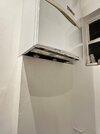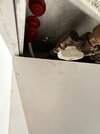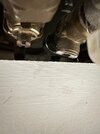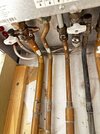Ah, just noticed mods moved this into its own thread...
Some background:
~Very old Vaillant Ecotec plus 831, 2005-2011 range, with output 24.4 kw / mostly microbore pipework / 6 medium and 2 large rads
Been only living in this property for just under two years, but had to have boiler repairs done already twice.
First time was general servicing, leaky airvent and pressure issues. The boiler would overpressure and then the safety mechanism would kick in self drain the system. This was with Error code. The engineer fixed the flue, resealed and cleaned the system.
Second time (9 months ago), the boiler started to overheat (80degrees flow temp), whereby it would just shutoff. After letting it cool down 5 mins, it would work again. Engineer removed tons of sludge, replaced pump and seals, replaced plate heat exchanger, replaced canoe filter (it was actually missing completely). I do remember him talking about getting a new expansion vessel, but I can't see it on the invoice.
Anyhow, system ran fine for a few month, but I started to see pressure build up again. We don't use central heating much, so this only became apparent in the winter when using central heating much more. And this is still currently the case. Everything is working fine, but with more frequent central heating use pressure builds up from 1.5 bar to around 2.8 to 3 bar so once a week I drain the system to bring it down to 1.5 bar.
Sometime in the next 12-18 month I am looking to do a kitchen extension so then the idea would be to get a brand new boiler, rather than throwing down more money to fix this 15 year old thing...
Does this sound like it could be a leaky filling loop? Or does anyone have any other ideas?





